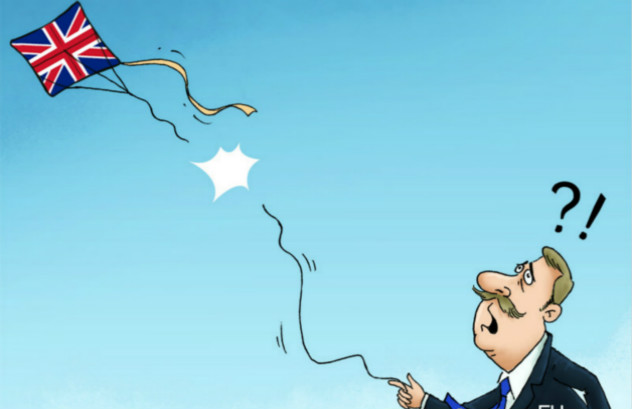Dollar and Chinese currency: Mysteries revealed
The Trump administration’s exchange-rate hawks contend that the US should designate China as a “currency manipulator.” In reality, the problem is the strengthening dollar, despite massive debt US owes to foreign countries.
For years, China pegged its currency to the US dollar. Due in part to pressure from its trading partners, Beijing in 2005 appreciated the renminbi (RMB) to US dollar by 2.1 percent and moved to a “managed float” exchange rate system, based on a basket of foreign currencies.
Subsequently, the bilateral exchange rate stayed around 6.83 RMB from July 2008 to June 2010 for damage control amid the Great Recession. Currency appreciation was resumed in June 2010, but at a slower pace than in previous years.
Despite claims of devaluation, the RMB actually appreciated by 35 percent on a nominal basis against the dollar from June 2005 through July 2015.
In August, 2015, China’s central bank took new measures to improve the market-orientation of its daily central parity rate of the RMB. This was vital to support the internationalization of the RMB. Over the next three days, the RMB depreciated against the dollar by 4.4 percent — not because the central bank was opposing the market forces but precisely because it allowed those forces to affect the currency more than before.
From July 2015 to mid-December 2016, the RMB depreciated by 13.6 percent against US dollar. As the US Federal Reserve has taken steps toward interest rate normalization, US dollar has strengthened. Last fall, US dollar hit its 14-year high. It has been fueled by rising government bond yields (and the Fed’s anticipated rate hike), and expectations of Trump’s fiscal expansion (infrastructure stimulus). After last January’s correction, US dollar remains strong. In the next three quarters, it will be supported by the Fed’s anticipated rate hikes.
In theory, the Trump administration continues to support a “strong dollar policy.” In practice, it will not tolerate greater dollar appreciation in the short term. That’s the real reason for efforts to target China, Japan and Germany for “currency manipulation.”
Yet, the very notion of “currency manipulation” is flawed. All governments take actions that directly or indirectly affect the exchange rate. In the past decade, this has been more of a rule than an exception. Moreover, reckless budget deficits can lead to a weak currency; so can low interest rates. Today, the consensus is that the US-Chinese exchange rate is pretty much where it should be. In early January, US dollar climaxed at 6.96 RMB. After China began to curb speculation in the RMB depreciation, things have steadied and today a dollar equals 6.89 RMB.
Meanwhile, calls for a weaker dollar are increasing in the US. There is a deep gap between what the US owes other countries and what other countries owe the US. And that gap is now climbing to a danger zone. Consequently, it would require a weaker dollar.
As the US must borrow ever more to finance its trade deficit, rising debt is pushing America deeper into the red.
In the last quarter of 2016, foreign ownership of US debt outpaced US claims on foreigners by US$8.4 trillion, which translates to a deficit that’s almost half of US GDP. Currently, it is projected to exceed 53 percent by 2021, but that could happen a lot faster if the Trump administration cuts taxes and Congress expands the budget deficit.
By some estimates, an effort to stabilize the borrowing deficit at 50 percent of the US GDP would require halving the trade gap to 2 percent of GDP by 2020, instead of the projected 4 percent path. That, however, may not be viable without 14 percent depreciation in the dollar.
The problem in the US/RMB exchange rate is not the alleged currency manipulation in China (or elsewhere). Rather, US twin deficits cast a long, potentially dangerous shadow over the US economy, which no longer justifies a strong dollar.
Dan Steinbock is the founder of Difference Group. He has served as research director of international business at the India China and America Institute (US) and a visiting fellow at the Shanghai Institutes for International Studies (China) and the EU Centre (Singapore).





















